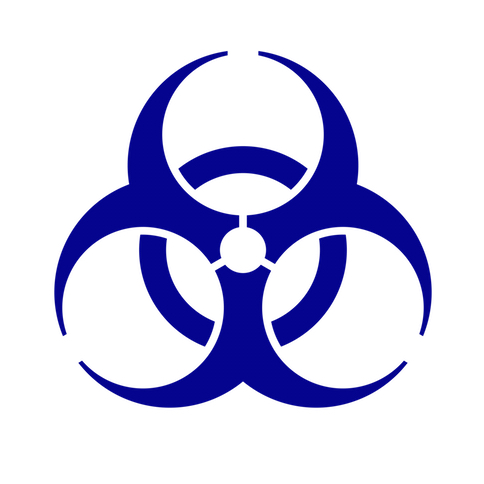October 28th – Providence, RI – A report released today by former DHS Secretary Tom Ridge, former US Senator Joseph Lieberman and members of the Blue Ribbon Study Panel on Biodefense (BRSPB) identified “serious gaps and inadequacies that continue to leave the Nation vulnerable to biothreats”.
Their comprehensive report on the state of National Biodefense calls for a dramatic change in the government’s approach to biodefense and pandemic preparedness, prioritizing innovation and platform approaches to developing Medical Counter Measures (MCM), such as technologies that can produce “vaccines-on-demand” like those pioneered by EpiVax, a vaccine design firm in Providence Rhode Island. The BRSPB also specifically called for MCM “that enable using multiple antigens on an existing platform”, and for 10% of new NIH “Innovation” funds and 10% of BARDA funds allocated to funding innovative platform technologies.
These recommendations were included in testimony to the Blue Ribbon Panel by URI Professor and EpiVax CEO Annie De Groot MD, who argued that a platform-based vaccines-on-demand approach would be more responsive to current biothreat scenarios than expensive, wasteful stockpiles. According to the BRSPB, terrorists already possess the ability to produce ‘genetically engineered pathogens’ that merge the toxic attributes of more than one agent, meaning that stockpiling vaccines against single agents is a concept that is now obsolete.
“We congratulate the Blue Ribbon Study Panel on their comprehensive review and echo their call for prioritizing innovation over incrementalism in MCM development. Lives are at stake and money is being wasted on products and processes that simply do not work. As this report shows, there is a better way.” said Dr. De Groot.
EpiVax has been at the forefront of the ‘vaccines-on-demand’ movement for the past decade. The Providence-based company uses special computer driven tools (in silico methods) that have been successfully validated in published studies. EpiVax Scientists have already created several such ‘vaccines-on-demand’ for the DARPA and the Department of Defense, under “stress test” conditions. Vaccines-on-demand address concerns raised with the BRSPB by Secretary of the Navy Richard Danzig, who said “We don’t really get to choose what we have to prepare for.”
This is not the first time an independent study group has recommended changes in the way the United States prepares for a bio-related threat. In 2008, a bipartisan Commission on the Prevention of Weapons of Mass Destruction Proliferation and Terrorism led by Bob Graham (D-FL) and Jim Talent (R-MO) raised concern that the nation was poorly prepared for any terrorist event involving a biologic weapon. The commission urged the nation to develop tools to counter that threat.
In 2010, pointing to very real delays and problems encountered during the national response to the H1N1 influenza pandemic, which highlighted very important weaknesses in the national preparedness system, Graham and Talent gave U.S. bio-defense preparedness an “F.” The report released today also found “serious gaps and inadequacies” that, coupled with “lack of strong centralized leadership”, has weakened National preparedness for pandemic threats and bioterror.
Dr. Annie De Groot, said to be one of the top 50 “Vaccine Influencers” in the world in 2014, testified to the Blue Ribbon Panel about her technology in May 2015. Basing her recommendations on nearly three decades of experience with the vaccine industry, she made the following recommendations:
- Require BARDA to devote no less than 10% of its annual budget to funding new, innovative technologies that will lead to faster response and recovery than current vaccines achieve.
- Fix the broken SBIR (Small Business Innovative Research) program at the NIH, prioritizing innovation over incrementalism in medical countermeasure development.
- Encourage the FDA to develop a strategy for approving platform approaches to making ‘vaccines on demand’.
- Invest in innovator research in the United States.
All four of Dr. De Groot’s recommendations were adapted by the Blue Ribbon Panel in their report.
About the Blue Ribbon Panel
To provide a comprehensive assessment of the state of U.S. biodefense efforts, former Senator Joe Lieberman and former Governor Tom Ridge co-chaired the Blue Ribbon Study Panel on Biodefense during 2014. Former Secretary of Health and Human Services Donna Shalala, former Senator Tom Daschle, former Representative Jim Greenwood, and the Honorable Kenneth Wainstein also served as members. Four public meetings were convened in Washington, DC on biological and chemical threat awareness, prevention and protection, surveillance and detection, and response and recovery. Current and former Members of Congress, former Administration officials, state and local representatives, thought leaders, and experts provided their perspectives on current biodefense efforts, including strengths, weaknesses, and opportunities.
About EpiVax
EpiVax, Inc. is a privately-held biotechnology company located in Providence, Rhode Island, focused on the development of vaccines and biologic products for human and animal diseases. The company applies its immunoinformatics toolkit to design “biobetter” biologics and vaccines, and to screen biologics for immunogenicity so as to reduce adverse effects in the clinic. CEO De Groot was recently named one of the 50 most influential persons in the field of vaccines. For more information visit https://www.epivax.com.
Useful Links:
Full Blue Ribbon Panel Report: Click here.
FastVax Article: Click here
Rapid Development of Lassa Fever Vaccine: Click here
Department of Defense Grant Award for Q Fever Vaccine: Click here
References
“A NATIONAL BLUEPRINT FOR BIODEFENSE.” Blue Ribbon Study Panel on Biodefense. 28 Oct. 2015. <https://www.biodefensestudy.org/SiteAssets/Pages/default/1425-2139_BRSP_Report_100815b%5b1%5d%5b6%5d.pdf>.
De Groot, Anne S., MD. “Testimony of Dr. Annie De Groot before the Blue Ribbon Study Panel on Biodefense.” EpiVax, Inc., 10 Apr. 2015. <https://www.epivax.com/wp-content/uploads/2015/04/EpiVax-De_Groot_testimony_Biodefense_Blue_Ribbon_Panel_01Apr2015G.pdf>.
De Groot, Anne S., MD. “Publications.” EpiVax Inc Informatics and Immunology. <https://www.epivax.com/publications/>.
Graham, Bob, and Jim Talent. (2008): World At Risk. 1 Dec. 2008. <https://www.pharmathene.com/World_at_Risk_Report.pdf>.
Graham, Bob, and Jim Talent. “Prevention of WMD Proliferation and Terrorism Report Card.” (2010): 26 Jan. 2010. <https://www.pharmathene.com/WMD_Report_Card.pdf>.
De Groot, Anne S. “Home.” EpiVax Inc Informatics and Immunology. <https://www.epivax.com/>.
“A NATIONAL BLUEPRINT FOR BIODEFENSE EXECUTIVE SUMMARY.” Blue Ribbon Study Panel on Biodefense. 28 Oct. 2015. <https://www.biodefensestudy.org/SiteAssets/Pages/default/Executive%20Summary%20-%20A%20National%20Blueprint%20for%20Biodefense.pdf>
De Groot et al. “Making Vaccines “on Demand”.” Human Vaccines & Immunotherapeutics 9.9 (2013): 1877-884.
Leblanc et al, “VaxCelerate II: Rapid Development of a Self-assembling Vaccine for Lassa Fever.” Human Vaccines & Immunotherapeutics 10.10 (2014): 3022-038.
“$5.2 Million Department of Defense Grant Awarded to “Vaccine on Demand” Consortium.” EpiVax Inc Informatics and Immunology. 9 June 2015. <https://www.epivax.com/news/5-2-million-department-of-defense-grant-to-vaccine-on-demand-consortium/>.

